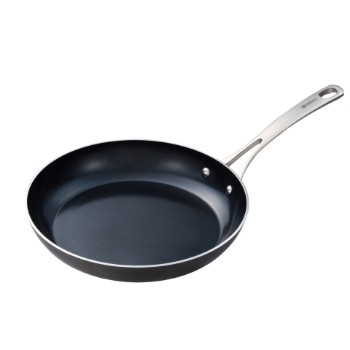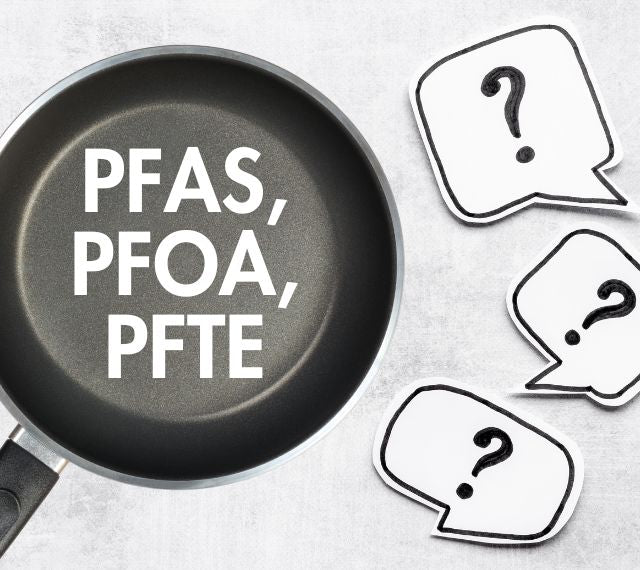Cooking is an essential part of daily life. However, the safety of the cookware we use is often overlooked.
PFAS, PFOA, and PTFE are chemicals commonly found in non-stick cookware. These substances raise health concerns for many people. Choosing PFAS, PFOA, and PTFE-free cookware is a smart decision. This cookware is safer for you and the environment. It helps reduce exposure to harmful chemicals.
With growing awareness of health and safety, many brands now offer alternatives. These options provide the same convenience without the risks. In this blog post, we will explore the benefits of using PFAS, PFOA, and PTFE-free cookware. You will learn about safe materials and how to make the best choices for your kitchen.
The Rise Of Non-toxic Cookware
Many people are switching to non-toxic cookware. They want to avoid harmful chemicals. Cookware made without PFAS, PFOA, and PTFE is gaining popularity. This change supports healthier cooking and safer homes.
Health Concerns Behind Pfas And Pfoa
PFAS and PFOA are chemicals often found in non-stick cookware. They are linked to several health issues. Research shows they may cause:
- Hormonal disruptions
- Immune system problems
- Increased cholesterol levels
- Higher cancer risks
These chemicals can accumulate in the body over time. This raises serious health concerns. Many families are worried about their safety.
Market Shift Towards Safer Alternatives
The cookware market is changing rapidly. Many brands now offer safer options. These alternatives include:
- Cast iron
- Stainless steel
- Ceramic
- Glass
Consumers are more aware of what they cook with. They prefer products labeled as PFAS, PFOA, and PTFE free. This shift shows a strong demand for healthier cooking solutions.
| Type of Cookware | Benefits | Drawbacks |
|---|---|---|
| Cast Iron | Durable, retains heat well | Heavy, requires seasoning |
| Stainless Steel | Non-reactive, easy to clean | Poor heat distribution |
| Ceramic | Non-toxic, easy to handle | Can chip easily |
| Glass | No chemicals, great for baking | Can break easily |
More consumers are choosing non-toxic cookware. This trend is expected to grow. Healthier cooking is now a priority for many.
Decoding The Acronyms: Pfas, Pfoa, And Ptfe
Understanding cookware labels can be tricky. Acronyms like PFAS, PFOA, and PTFE often appear. Knowing what these mean helps you make safer choices. These substances are linked to health risks. Let’s break down these terms to understand their impact.
Chemical Properties And Uses
PFAS stands for per- and polyfluoroalkyl substances. These chemicals are man-made. They are used for their ability to repel water and grease. This makes them popular in many products, including cookware. Here are some common uses of PFAS:
- Non-stick cookware
- Waterproof clothing
- Food packaging materials
- Stain-resistant carpets
PFOA, or perfluorooctanoic acid, is a specific type of PFAS. It was widely used in the production of non-stick coatings. PFOA is now largely phased out due to health concerns. PTFE, or polytetrafluoroethylene, is a non-stick coating found in many pans. It is safe for cooking but can release harmful fumes if overheated.
Risks Associated With Non-stick Coatings
Many non-stick coatings contain PFAS and PFOA. These chemicals can pose health risks. Research shows links to various health issues, including:
- Increased cholesterol levels
- Thyroid problems
- Immune system effects
- Reproductive issues
When PTFE is heated above 500°F, it can release toxic fumes. These fumes can harm both humans and pets. Choosing PFAS, PFOA, and PTFE free cookware can reduce these risks. Look for alternatives like stainless steel or cast iron. These materials offer safe cooking options without harmful chemicals.
Health Impacts Of Traditional Non-stick Cookware
Traditional non-stick cookware often contains harmful chemicals. These chemicals can pose serious health risks. Many people use these products without knowing their potential dangers. Understanding these health impacts is important for making safe choices.
Studies Linking To Health Issues
Several studies have connected traditional non-stick cookware to health problems. These health issues include:
- Hormonal Disruption: Chemicals like PFAS can interfere with hormone levels.
- Increased Cancer Risk: Long-term exposure may lead to certain cancers.
- Liver Damage: Some studies show liver damage in animals exposed to these chemicals.
- Immune System Effects: Chemicals may weaken the immune response.
Research continues to uncover links between these chemicals and serious health risks. Consumers should be aware of these findings.
Regulatory Actions On Harmful Chemicals
Governments are taking action against harmful chemicals in cookware. Key regulatory actions include:
| Regulatory Body | Action Taken | Year |
|---|---|---|
| U.S. EPA | Proposed limits on PFAS in products | 2021 |
| EU | Banned certain PFAS in consumer goods | 2020 |
| Canada | Introduced guidelines for PFAS use | 2019 |
These actions reflect growing concern over health impacts. Consumers now seek safer alternatives.

Credit: www.amazon.com
Benefits Of Pfas, Pfoa, And Ptfe Free Cookware
Choosing cookware without PFAS, PFOA, and PTFE offers many benefits. These materials can be harmful to health and the environment. By using safer cookware, you protect your family and the planet.
Safety In The Kitchen
Cookware free from PFAS, PFOA, and PTFE is safer for cooking. These chemicals can release harmful fumes when heated. Safe alternatives are made from materials like ceramic or stainless steel. Here are some key safety benefits:
- No toxic fumes: Reduced risk of harmful vapors.
- Healthier meals: No chemicals leaching into food.
- Durable materials: Less likely to chip or break.
Environmental Advantages
Using PFAS, PFOA, and PTFE free cookware benefits the environment. These chemicals can pollute water and soil. By choosing safer options, you support a cleaner planet. Here are some environmental advantages:
| Advantage | Description |
|---|---|
| Reduced Pollution | Less chemical waste in landfills and waterways. |
| Biodegradable Options | Many safer cookware materials are eco-friendly. |
| Sustainable Production | Some brands use renewable resources. |
Choosing PFAS, PFOA, and PTFE free cookware is a smart choice. It promotes safety in your kitchen and supports a healthier environment.
How To Identify Safe Cookware
Choosing safe cookware is vital for health. Many pots and pans contain harmful chemicals. Knowing how to identify safe options helps you cook confidently.
Labels And Certifications To Look For
Check for specific labels and certifications. These indicate safe cookware. Look for:
- PTFE-free: Means no polytetrafluoroethylene.
- PFOA-free: Indicates no perfluorooctanoic acid.
- PFAS-free: Stands for no per- and polyfluoroalkyl substances.
- Green Pan: Safe non-toxic ceramic cookware.
- FDA-approved: Meets safety standards.
Materials To Avoid
Be aware of materials that can be harmful. Avoid:
- Non-stick coatings containing PTFE or PFOA.
- Aluminum: Often treated with toxic coatings.
- Traditional Teflon: Can release harmful fumes.
- Copper cookware: If not lined properly.
Choose cookware made from safe materials like stainless steel, cast iron, or ceramic. These options are durable and safe for cooking.
Top Pfas-free Cookware Materials
Choosing the right cookware is important for health. PFAS, PFOA, and PTFE can be harmful. Many people seek safer, PFAS-free options. Here are two great materials to consider.
Ceramic: A Natural Alternative
Ceramic cookware is made from natural materials. It is free from PFAS and chemicals. This makes it a safe choice for cooking.
- Non-toxic: No harmful substances.
- Easy to clean: Smooth surface helps with cleanup.
- Even heat distribution: Cooks food evenly.
Ceramic cookware comes in various colors and designs. This adds style to your kitchen. It is also lightweight, making it easy to handle.
Cast Iron: The Timeless Choice
Cast iron cookware has been used for centuries. It is durable and can last a lifetime. This cookware is naturally PFAS-free.
| Benefits | Details |
|---|---|
| Versatile: | Can be used on the stove or in the oven. |
| Retains heat: | Great for searing and frying. |
| Improves with age: | Becomes non-stick with seasoning. |
Cast iron pans can be heavy. Proper care is needed to prevent rust. They are a reliable choice for many cooks.
Consider these materials for your kitchen. They offer safety and performance. Choosing PFAS-free cookware is a healthy decision.
Maintaining Your Non-toxic Cookware
Taking care of your non-toxic cookware is essential. It ensures safety and durability. Proper maintenance keeps your cooking surfaces effective and long-lasting. Follow these tips to keep your cookware in great shape.
Cleaning And Care Tips
Cleaning your cookware correctly helps avoid damage. Use gentle cleaning methods and safe products. Here are some tips:
- Use soft sponges. Avoid steel wool or harsh scrubbers.
- Hand wash with warm, soapy water.
- Avoid high heat. Stick to medium or low settings.
- Dry thoroughly. This prevents water spots and rust.
For stubborn stains, soak the cookware. Use a mixture of baking soda and water. Apply it to the stain and let it sit. Then gently scrub and rinse well.
Maximizing Longevity And Performance
To maximize the life of your non-toxic cookware, follow these practices:
- Store carefully. Avoid stacking heavy items on top.
- Use wooden or silicone utensils. Metal can scratch surfaces.
- Season your cookware. This creates a natural non-stick layer.
- Avoid cooking sprays. They can leave residues that are hard to remove.
Regular maintenance helps ensure your cookware performs well. Check for signs of wear. If you notice scratches or chips, consider replacing the item.
| Tip | Benefit |
|---|---|
| Use soft sponges | Prevents scratches |
| Hand wash only | Maintains surface integrity |
| Store carefully | Reduces wear and tear |
| Use wooden utensils | Prevents surface damage |

Credit: www.amazon.com
Navigating The Market: A Buyer’s Guide To Non-toxic Cookware
Choosing non-toxic cookware can feel overwhelming. Many brands claim to be safe, but how do you know which ones are truly free from harmful chemicals? Understanding the options helps you make informed choices. This guide will help you navigate the market for cookware that is PFAS, PFOA, and PTFE free.
Questions To Ask Before Purchasing
Before buying cookware, consider these important questions:
- Is it labeled non-toxic? Look for clear labels on the packaging.
- What materials are used? Check if it is made from ceramic, stainless steel, or cast iron.
- Is it dishwasher safe? This makes cleaning easier.
- Can it withstand high temperatures? Ensure it can handle your cooking needs.
- What is the warranty? A good warranty shows the brand’s confidence in its products.
Recommended Brands And Products
Here are some trusted brands known for non-toxic cookware:
| Brand | Product Type | Features |
|---|---|---|
| GreenPan | Ceramic Cookware | PFAS, PFOA, and PTFE free |
| All-Clad | Stainless Steel | Durable and dishwasher safe |
| Lodge | Cast Iron | Natural non-stick, lasts for years |
| Cuisinart | Hard Anodized | Non-toxic, even heat distribution |
Researching these brands can help you find safe options. Look for user reviews to see how others rate their performance.
Investing in non-toxic cookware is a smart choice. It promotes a healthier kitchen and better cooking experiences.
The Future Of Cookware: Innovations And Trends
The cookware industry is changing. New materials and technologies are emerging. Consumers want safer options. Cookware without harmful chemicals like PFAS, PFOA, and PTFE is in demand. Let’s explore the latest innovations and trends shaping the future of cookware.
Emerging Technologies In Non-stick Surfaces
New technologies offer safer non-stick surfaces. These surfaces use natural materials. They avoid harmful chemicals. Some key innovations include:
- Ceramic Coatings: Made from sand, ceramic coatings are safe and effective.
- Titanium Reinforced: This technology enhances durability and scratch resistance.
- Silicone-Based Coatings: These are non-toxic and provide great release properties.
These emerging technologies focus on safety and performance. They offer cooking ease without compromising health. Manufacturers are investing in research to improve these products.
The Role Of Consumer Awareness In Shaping The Industry
Consumers play a vital role in the cookware market. Awareness of harmful substances influences buying choices. Many people now check labels before purchasing. They seek products free of PFAS, PFOA, and PTFE.
Consumer preferences lead to changes in production. Companies are responding to demands for safer cookware. Some key factors driving change include:
- Health Concerns: Growing awareness of chemical exposure impacts purchasing decisions.
- Environmental Impact: Consumers prefer eco-friendly products and sustainable practices.
- Brand Transparency: Shoppers value brands that openly share information about materials.
As consumers become more educated, the industry must adapt. Companies that prioritize safety will thrive. The future of cookware looks promising, thanks to informed consumers.

Credit: cutlery.kyocera.com
Cooking With Confidence: Healthier Choices For Your Home
Choosing cookware is important for a healthy kitchen. Many people are unaware of harmful chemicals in traditional cookware. PFOA, PFAS, and PTFE can pose health risks. Opting for PFOA-free, PFAS-free, and PTFE-free cookware helps create a safer cooking environment. This choice empowers home cooks to prioritize health without sacrificing performance.
Empowering Home Cooks
Cookware choices directly impact your family’s health. Using PFOA-free, PFAS-free, and PTFE-free products reduces chemical exposure. Here are some benefits of making this switch:
- Healthier meals for your family
- Safer cooking experiences
- Less worry about harmful chemicals
Home cooks can enjoy peace of mind. Knowing your cookware is safe makes cooking enjoyable. Choose brands that prioritize health and safety.
Balancing Performance With Safety
High-quality cookware should perform well and keep you safe. Here are key features to consider:
| Cookware Type | Performance | Safety |
|---|---|---|
| Stainless Steel | Excellent heat distribution | Non-reactive and durable |
| Ceramic | Even cooking | Non-toxic surface |
| Cast Iron | Superior heat retention | Natural non-stick properties |
Choosing the right cookware ensures healthy meals. Look for options that combine performance and safety. This balance enhances your cooking experience.
Frequently Asked Questions
What Are Pfas, Pfoa, And Ptfe?
PFAS (per- and polyfluoroalkyl substances) are synthetic chemicals used in various products. PFOA (perfluorooctanoic acid) is a specific type of PFAS often found in non-stick cookware. PTFE (polytetrafluoroethylene) is a non-stick coating that can contain PFOA. It’s essential to choose cookware that is free from these substances for safer cooking.
Why Choose Pfas, Pfoa, And Ptfe-free Cookware?
Opting for PFAS, PFOA, and PTFE-free cookware reduces health risks. These chemicals can leach into food, potentially causing harmful effects. By selecting safer alternatives, you minimize exposure to toxic substances. This choice also supports a healthier cooking environment for you and your family.
Is Non-stick Cookware Safe Without These Chemicals?
Yes, non-stick cookware can be safe without PFAS, PFOA, or PTFE. Many brands now offer alternative coatings made from natural materials. These options provide excellent non-stick properties without harmful chemicals. Always check labels to ensure your cookware is free from these substances.
How To Identify Pfas-free Cookware?
To identify PFAS-free cookware, look for specific labels or certifications. Brands often advertise their products as free from PFAS, PFOA, and PTFE. Additionally, research the materials used in the cookware. Options like ceramic or cast iron are typically safer choices for health-conscious consumers.
Conclusion
Choosing PFAS, PFOA, and PTFE free cookware is a smart choice. Safe cooking means healthier meals for you and your family. These options reduce harmful chemicals in your kitchen. They also help protect the environment. Many brands offer great alternatives.
Investing in safer cookware is worth it. Enjoy cooking with peace of mind. You can create delicious meals without worry. Make the switch today for a healthier lifestyle. Your health and safety matter.





Leave a Reply